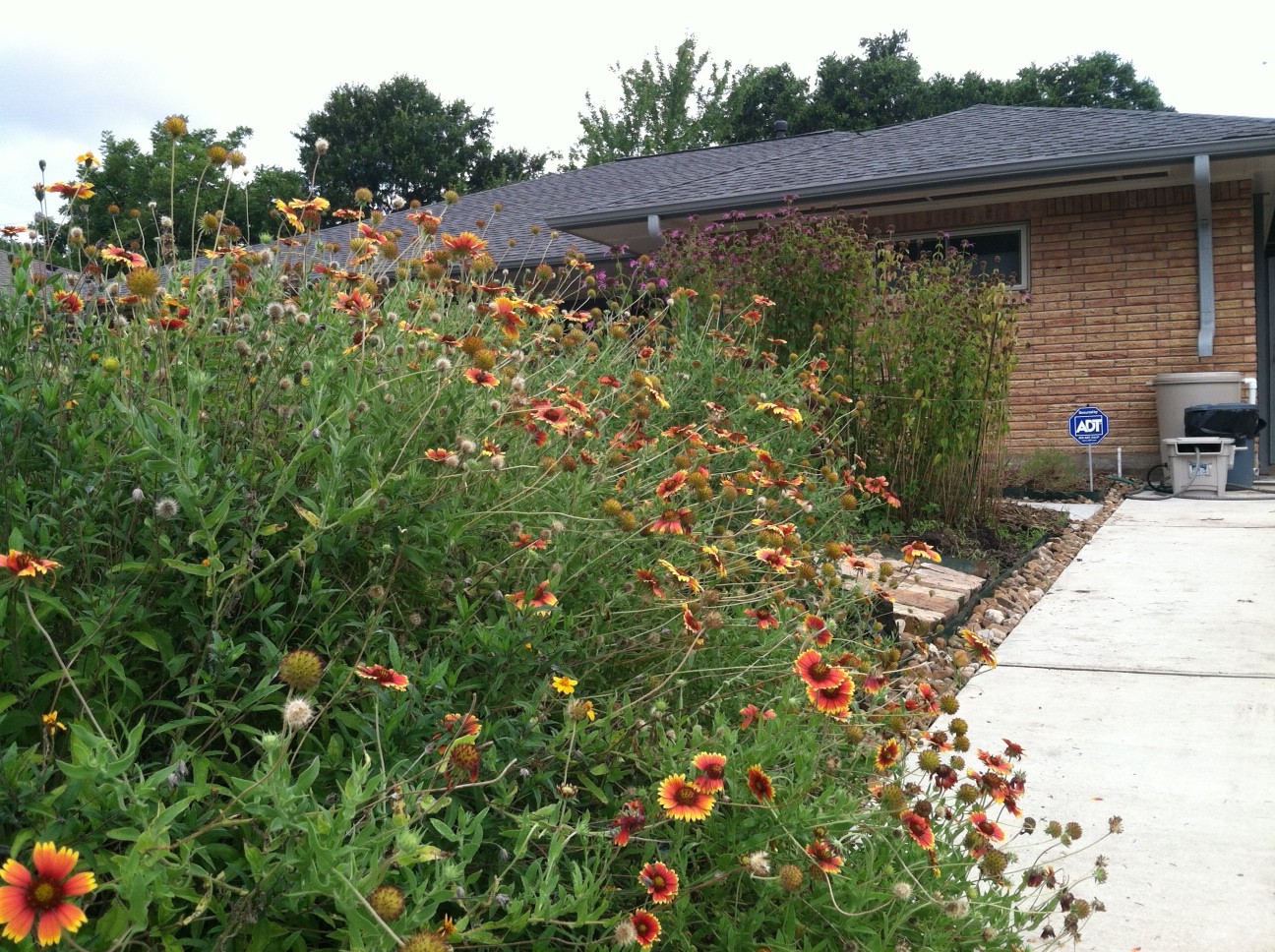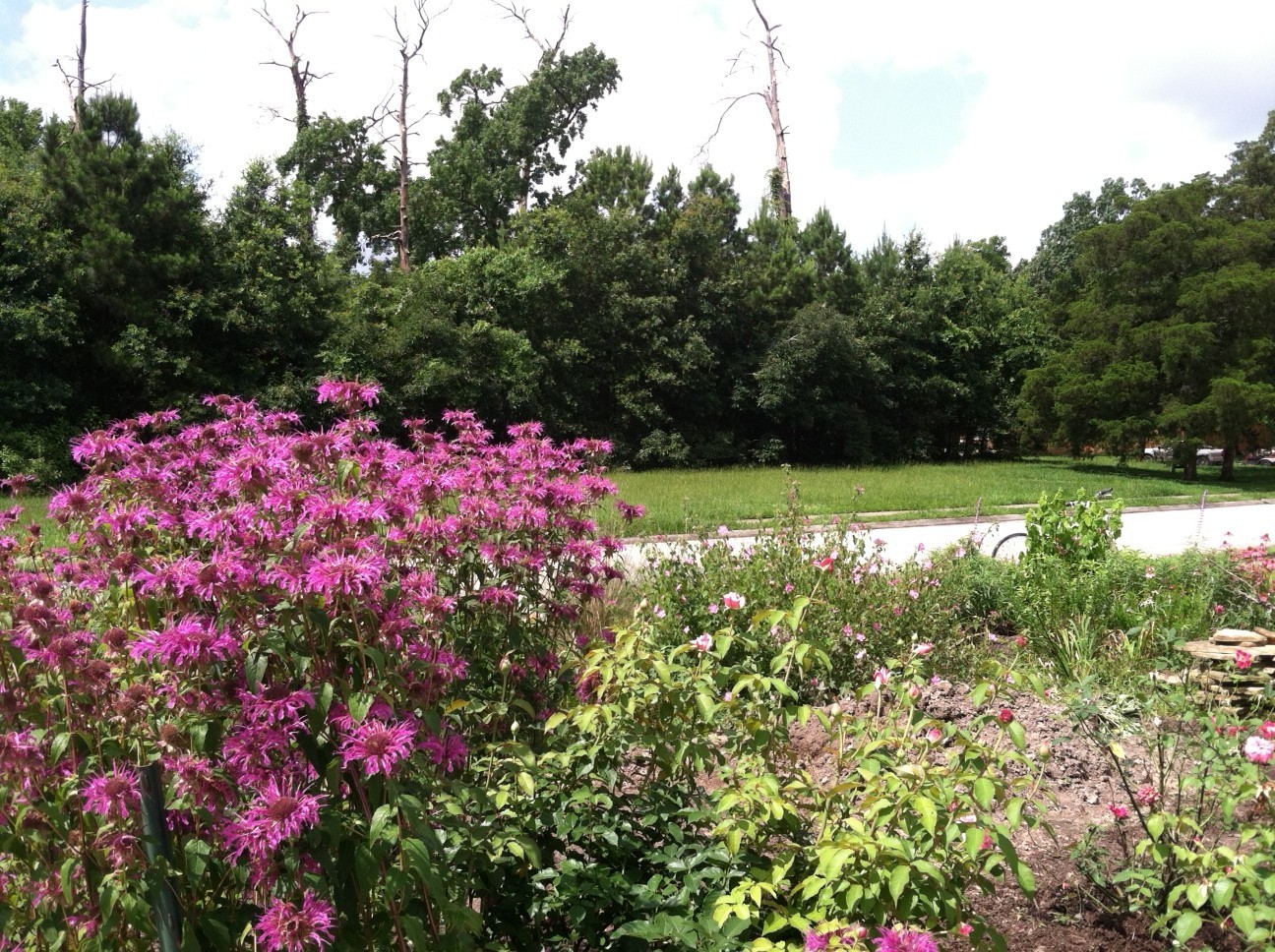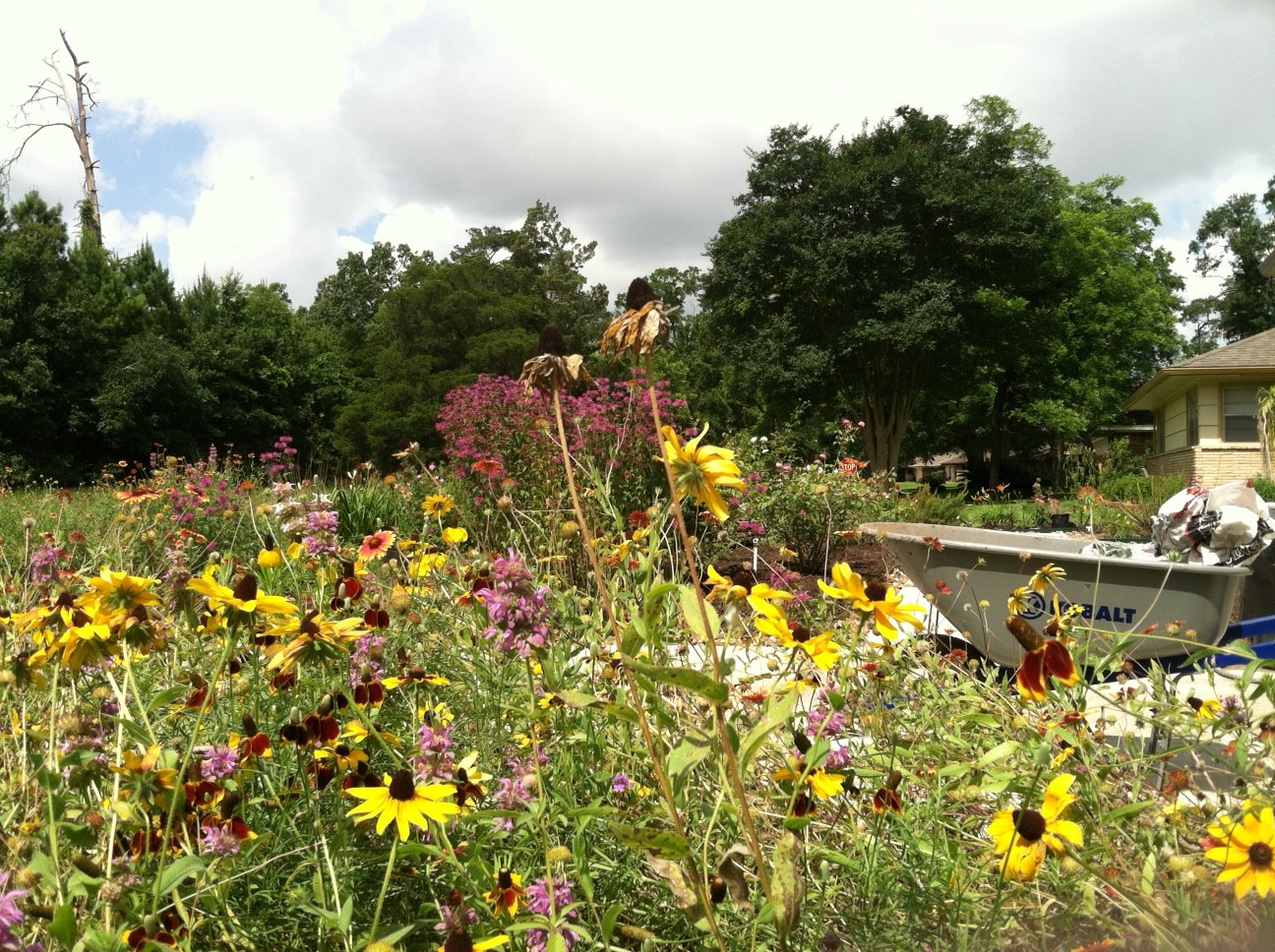Wildflowers Lure Butterflies to Yard
by Kristin Lucas, TMCC Resident
Have you ever walked across from West 11th Street Park and admired the house with a front yard full of wildflowers? I certainly have, and I’ve always wondered just how much work went into that garden. So, one day I stopped and left a note. The gardeners, Helen and Robert, were kind enough to agree to talk with me so that I could write up a small article for the Timbergram.
How much work is it? I am not going to sugarcoat this; the garden has been a lot of work lately because they are in the process of re-designing and re-arranging. When they are finished, the front two-thirds of the yard will be all wildflowers and Texas native plants, with some favorite cultivars like roses and day lilies in the back third. And, then, the garden should be pretty low maintenance. However, she added that wildflowers can be added to a yard on a much smaller scale and still have a similar effect.
Robert and Helen have lived in Timbergrove since 1994. They re-worked the front yard a few years later. I asked Helen if she had always envisioned a front yard of wildflowers and she told me that, honestly, she just replaced the grass because she didn’t like to mow. She has never really had a planting that was a total failure, although she has had some plantings that got out of hand. Some of the wildflowers that grow in the garden are bee balm, horse mint, Indian blanket, cornflower, black-eyed Susan, pipevine and of course, bluebonnets. In the spring, when they peek out their front window, they often catch a glimpse of parents taking the baby-in-the-bluebonnets picture in their front yard. Then for our Texas hot months, they have native plants like yucca, various salvias and zexmenia that require minimal watering. All of these plants attract a bevy of bees, butterflies and hummingbirds.
To bring the birds to the front yard, Helen plans to add one of her favorite garden items, the ever-flow fountain. She loves watching the birds enjoy themselves in the fountain, plus it provides a wonderful background notes.
After years of using mulch and working the soil, her garden soil is good and rich, but her secret seems mostly to be to keep at it. According to Helen, a garden is never done.
When I asked Helen what she liked most about Timbergrove, she rattled off a long list, but first on the list was West 11th Street Park. While we were standing gazing at the garden, we saw two red-headed woodpeckers swoop by and two big vultures park themselves in one of the skags (dead trees left in place in which woodpeckers and other birds nest). Helen and Robert have seen some of the resident great horned and screech owls as well. In the past, they have seen flying squirrels from the park.
Other things that she likes about Timbergrove are the great location, good neighbors, the calmness, and the range of ages of the residents. Me, too!
Have you seen something cool in Timbergrove Manor? We’d love to hear about it. Send your article submissions to timbergram@timbergrove.org




